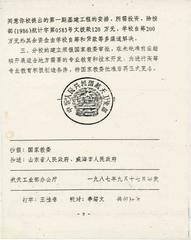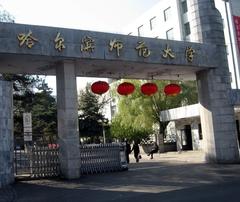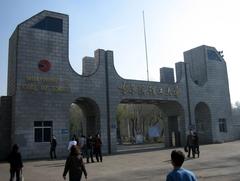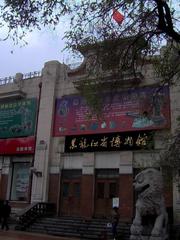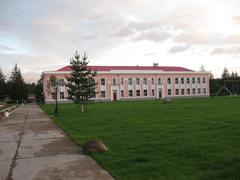Comprehensive Guide to Visiting Harbin, Heilongjiang, People’s Republic of China
Date: 13/08/2024
Captivating Introduction
Welcome to Harbin, the ‘Ice City’ where winter magic comes alive with towering ice sculptures and a mesmerizing blend of Russian and Chinese culture. Imagine stepping back to 2200 BC, where Stone Age tribes roamed freely around the serene Ashi River (Wikipedia). Fast forward to the late 19th century, and you’ll find Harbin springing to life as a bustling hub for Russian engineers, thanks to the Chinese Eastern Railway project (China Highlights). Picture the early 20th century: Harbin was a cosmopolitan melting pot, likened to New York City in the East, brimming with cultural diversity and European-style architecture. Walking down Central Street, you can practically hear the blend of languages and the hustle of diverse cultures (Travel China Guide). Today, Harbin stands as a modern marvel—a bustling metropolis and an economic powerhouse, home to over 10 million residents and a beacon of scientific research (Wikipedia).
Table of Contents
- Discover the Magic of Harbin, Heilongjiang, China: A Journey Through Time and Ice
- Early History
- Russian Influence and the Birth of Harbin
- Early 20th Century: A Cosmopolitan Melting Pot
- Japanese Occupation: A Tumultuous Era
- Post-World War II and the Rise of Modern Harbin
- Modern Marvels and Economic Powerhouse
- The Ice City: Harbin’s Winter Wonderland
- Architectural Wonders: A Fusion of Styles
- Education and Research: A Hub of Innovation
- Transportation: The Gateway of Northeast China
- Visitor Tips for Harbin, Heilongjiang, People’s Republic of China
Discover the Magic of Harbin, Heilongjiang, China: A Journey Through Time and Ice
Early History
Imagine stepping back to 2200 BC, where Stone Age tribes roamed freely. This land has been home to humans for millennia. The Jurchen Wanyan tribes, including the legendary Wanyan Aguda (the first emperor of the Jin dynasty), once called this place home. Picture the Ashi River flowing serenely, witnessing the birth of an empire (Wikipedia).
Russian Influence and the Birth of Harbin
Fast forward to the late 19th century, when the Russians arrived, bringing the Chinese Eastern Railway project. Harbin sprang to life in 1897, a bustling hub of Russian engineers and workers. It’s like a historical Lego set, with Russian bricks laying the foundation of a vibrant city (China Highlights).
Early 20th Century: A Cosmopolitan Melting Pot
By the early 20th century, Harbin was the New York City of the East, a cultural stew of Russians, Chinese, Jews, Poles, and Japanese. The city’s skyline boasted European-style buildings, with the Saint Sophia Cathedral as the crowning jewel. Central Street was a blend of languages and the hustle of diverse cultures (Travel China Guide).
Japanese Occupation: A Tumultuous Era
The city’s strategic allure caught Japan’s eye during the Russo-Japanese War (1904-1905). Harbin’s industrial boom under Japanese control brought both development and turmoil. The echoes of that era still linger in the city’s streets (Wikipedia).
Post-World War II and the Rise of Modern Harbin
Post-World War II, Harbin was handed over to the Chinese government, and in 1949 it became the capital of Heilongjiang Province. The city quickly morphed into an industrial powerhouse, the beating heart of Northeast China’s economic engine (China Highlights).
Modern Marvels and Economic Powerhouse
Today, Harbin is a bustling metropolis with over 10 million residents. It’s a lynchpin in Sino-Russian trade and a beacon of scientific research. The Harbin Institute of Technology is like the Hogwarts for engineers! (Wikipedia).
The Ice City: Harbin’s Winter Wonderland
Harbin’s winters are legendary. The Harbin International Ice and Snow Festival, which began in the 1980s, is the largest of its kind globally. Hunt for the most dazzling ice sculpture and sip on hot cocoa as you marvel at the frozen artistry (China Highlights).
Architectural Wonders: A Fusion of Styles
Harbin’s architecture is a visual cocktail of Russian, European, and Chinese influences. The Saint Sophia Cathedral, the largest Orthodox Church in the Far East, stands proud. Wander down Central Street, a pedestrian paradise of Renaissance and Baroque styles, and indulge in some retail therapy (Travel China Guide).
Education and Research: A Hub of Innovation
Harbin is a brainy city, hosting top-tier institutions like Harbin Engineering University, Harbin Medical University, and Northeast Agricultural University. The Harbin Institute of Technology consistently ranks among the world’s top engineering schools. It’s a powerhouse of scientific research (Wikipedia).
Transportation: The Gateway of Northeast China
Harbin’s strategic location makes it a transportation marvel. The Harbin Taiping International Airport connects you to the world, and the high-speed trains whiz you to Beijing in no time. The Songhua River port adds a splash of adventure to regional trade (China Highlights).
Conclusion: Your Next Adventure Awaits
So, are you ready to explore Harbin? With its rich history, cultural diversity, and modern marvels, Harbin is a treasure trove of experiences. Whether you’re chasing ice sculptures, marveling at architectural wonders, or diving into the city’s educational prowess, Harbin has something for every traveler. Don’t forget to download the Audiala tour guide app for expert insights and hidden gems. See you in the Ice City!
Visitor Tips for Harbin, Heilongjiang, People’s Republic of China
Best Time to Visit
Harbin is renowned for its winter charm, particularly the Harbin International Ice and Snow Sculpture Festival, which takes place from December to February. During this period, temperatures can drop to an average high of -13°C (8°F) and an average low of -25°C (-13°F) (China Highlights). For those who prefer milder weather, the summer months from June to August offer a different kind of beauty with temperatures ranging from 18°C to 28°C (Travel Planner).
Packing Essentials
Pack those thermal undies! Harbin’s winters are no joke, but they’re worth every shiver. Layering is key; thermal underwear, a thick down jacket, insulated gloves, and a warm hat are indispensable. It’s also advisable to bring thermal socks and waterproof boots to keep your feet dry and warm when exploring the city. Hand and foot warmers can provide additional comfort during extended outdoor activities (Travel Planner).
Accommodation
Harbin offers a range of accommodation options to suit different budgets. For luxury stays, consider the Mansion 1903 Hotel or The Ritz-Carlton, Harbin, both rated 4.8 stars. Mid-range options include the Shangri-La Songbei and JW Marriott Hotel Harbin River North, both rated 4.6 stars (Let’s Travel to China).
Transportation
Taxis are widely available and relatively inexpensive in Harbin. You can hail a taxi on the street or book one through ride-hailing apps like Didi Chuxing. Taxi fares start at CNY 8 for the first 3 km (1.9 mi), with additional kilometers charged at CNY 1.9 during the day and CNY 2.5 at night (Let’s Travel to China). For a more immersive experience, consider using ride-hailing apps like Didi, which offers services similar to Uber and can be more convenient for navigating the city (Travel Planner).
Currency and Payments
While many establishments in Harbin accept major credit cards, it’s wise to carry some cash, particularly for smaller vendors. ATMs are widely available, but ensure your bank card is compatible with Chinese ATMs. For mobile connectivity, consider purchasing a local SIM card or an international roaming plan to stay connected. Useful apps like WeChat, which offers messaging, payment, and translation services, and Baidu Maps for navigation can significantly enhance your experience (Travel Planner).
Language Barriers
Language barriers can occasionally present challenges, particularly for those unfamiliar with Mandarin. It is beneficial to have key phrases or addresses written in Chinese characters to show to transportation staff when needed. Additionally, many online booking platforms and travel apps offer English-language options, making the process of securing tickets more straightforward for non-Chinese speakers (Travel Planner).
Staying Warm and Safe
Safety in icy conditions is paramount. Invest in anti-slip shoe grippers to minimize the risk of falls on slippery surfaces. Always be cautious on sidewalks and streets, as they can be treacherous. Additionally, staying hydrated and using moisturizers can help prevent skin dryness caused by the cold weather (Travel Planner).
Local Cuisine
Harbin offers a unique culinary landscape that seamlessly blends Chinese and Russian influences. One of the city’s signature dishes is Harbin sausage, a flavorful, smoked delicacy that reflects its Russian roots. These sausages are best enjoyed at the century-old Harbin Central Street, where numerous vendors sell freshly grilled varieties (Travel Planner). Other local delicacies include Harbin-style borscht and various Russian pastries (Let’s Travel to China).
Cultural Etiquette
Harbin is a unique city peppered with Russian and European influence. Discover Harbin’s Jewish and Russian heritage as you wander the city packed with exquisite European-style buildings and sample its unique cuisine. Engaging respectfully with the local customs will not only enrich your travel experience but also leave a positive impression on the locals you meet (China Culture Tour).
Activities and Attractions
Harbin is famous for its Ice and Snow World, a must-visit during the winter months. The park features beautiful ice sculptures and some of the largest and most majestic ice-sculpted masterpieces. Especially at night, you will appreciate the amazing view of colorful lights buried inside the ice (China Discovery). Other notable attractions include the Siberian Tiger Park, Sun Island Scenic Resort, and St. Sophia Church (China Discovery).
Emergency and Health Services
For medical emergencies, Harbin has several hospitals and clinics that can provide necessary care. It’s advisable to have travel insurance that covers medical expenses. ATMs are all over the city, including 24-hour ones. The ATM from the Bank of China will cash traveler cheques and a wide range of foreign currencies (China Culture Tour).
Internet Access
Make sure to install ExpressVPN or NordVPN in advance for unrestricted internet access during your stay in China (Let’s Travel to China). This will allow you to access websites and services that may be restricted in China.
By following these tips, visitors can ensure a comfortable and enjoyable experience in Harbin, making the most of what this unique city has to offer. Download the Audiala tour guide app for more secrets, challenges, and tips to make your Harbin adventure unforgettable.
Call to Action
So, are you ready to explore Harbin? A city where history and modernity dance in a seamless waltz. From the enchanting Harbin International Ice and Snow Festival, where ice sculptures dazzle in the winter sun, to the architectural wonders that tell tales of Russian and European influence, Harbin is a treasure trove of experiences (China Highlights). Dive into the city’s educational prowess at top-tier institutions like the Harbin Institute of Technology, often referred to as the Hogwarts for engineers (Wikipedia). Whether you’re savoring the local cuisine, wandering down Central Street, or marveling at the frozen artistry, Harbin offers something for every traveler. Don’t forget to download the Audiala tour guide app for expert insights and hidden gems. Your next adventure awaits in the Ice City—see you in Harbin!
References
- Wikipedia. (n.d.). Harbin. https://en.wikipedia.org/wiki/Harbin
- China Highlights. (n.d.). Harbin. https://www.chinahighlights.com/harbin/
- Travel China Guide. (n.d.). Harbin Attractions. https://www.travelchinaguide.com/attraction/heilongjiang/harbin/
- China Highlights. (n.d.). Harbin International Ice and Snow Festival. https://www.chinahighlights.com/festivals/harbin-ice-and-snow-festival.htm
- Travel Planner. (n.d.). Essential Travel Tips for Visiting Harbin. https://www.travelplanner.com.my/essential-travel-tips-for-visiting-harbin/
- Let’s Travel to China. (n.d.). Things to do in Harbin, China. https://letstraveltochina.com/things-to-do-in-harbin-china/
- China Culture Tour. (n.d.). Harbin. https://www.chinaculturetour.com/harbin/
- China Discovery. (n.d.). Harbin Attractions. https://www.chinadiscovery.com/harbin-tours/attractions.html
- China Discovery. (n.d.). Harbin Travel Guide. https://www.chinadiscovery.com/heilongjiang/harbin.html



